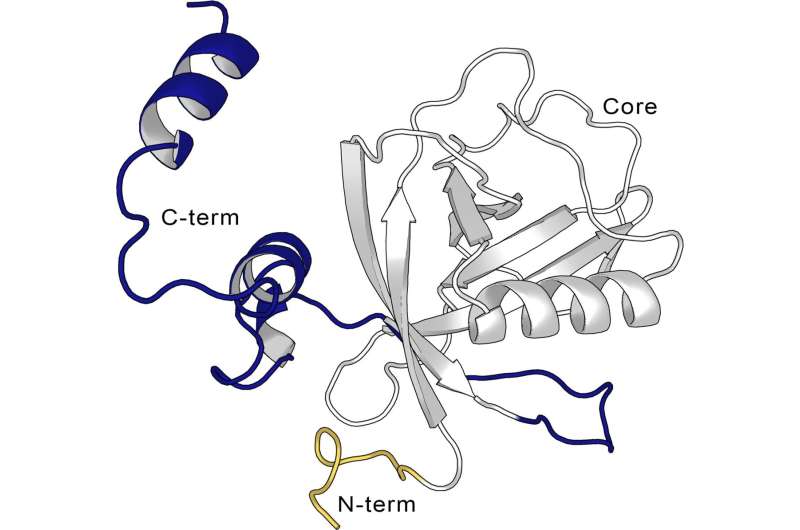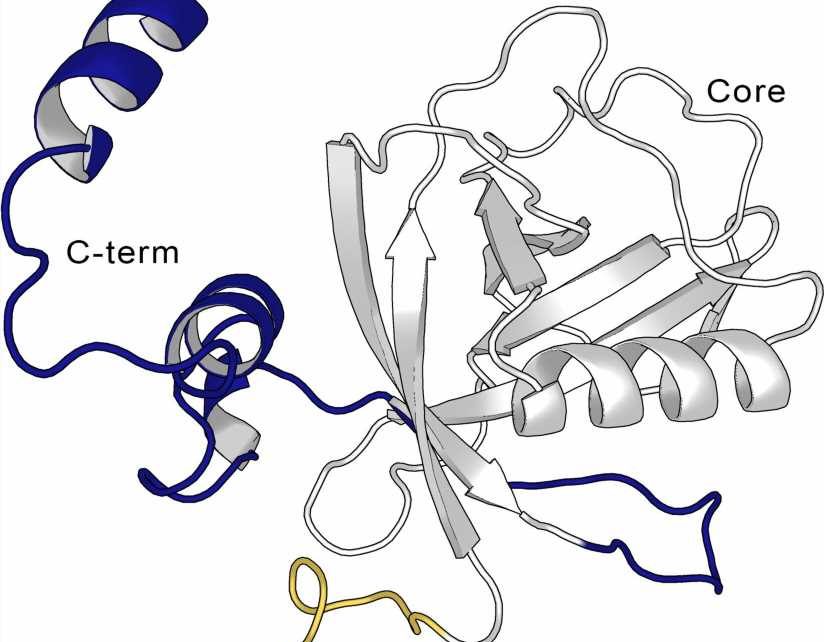
Structural details of an attractive drug target in coronaviruses that could be used against SARS-CoV-2 and in future pandemics have been published today in eLife.
The study reveals hidden pockets in an important piece of the virus’s machinery that it uses to evade the immune response and suggests that drugs binding to one of these pockets could halt virus replication.
One of the proteins known to play a role in SARS-CoV-2 infection is non-structural protein-1 (Nsp1), but its function has been studied less than other parts of the virus such as the Spike protein, which it uses to enter human cells. Nsp1 is found in several coronaviruses, and its role is to help the virus hijack the human’s protein production machinery.
“It’s thought that Nsp1 acts as a gatekeeper, preventing the human host from making important defense proteins, while allowing the coronavirus to take over protein production for its own means,” explains first author Alberto Borsatto, a Ph.D. student at the University of Geneva, Switzerland.
“This makes it an attractive antiviral drug target in principle, but the shape of Nsp1 makes designing a potential drug difficult. So far, only shallow, superficial cavities have been seen on the Nsp1 surface, and this makes it challenging for drugs to attach and interfere with Nsp1’s function.”
To explore whether it might be possible to design drugs against Nsp1, the team used computational models to study its 3D structure and how it changes shape under different conditions or when attached to a variety of molecules. This revealed four previously unidentified binding pockets, two of which were completely hidden, and two that were partially hidden.
To determine whether these pockets could be targeted with drugs, the team conducted an experiment where they soaked the crystallized Nsp1 protein with 59 different chemical fragments that had “attached” to the protein in the computer model. To their surprise, only one of the fragments bound to Nsp1, in the partially hidden “pocket 1.” On further investigation, they found that the other three pockets were obscured by crystal contacts that prevented the chemical fragments from binding in the crystal-soaking experiments.
Encouraged by finding a “hit” for pocket 1, they looked at whether a drug binding at this position would prevent Nsp1 from interacting with the protein production machinery. Indeed, once Nsp1 was in the orientation seen when bound to the chemical fragment, it could no longer interact with virus mRNA—the essential messenger molecule used to make proteins. This suggests that a drug targeting pocket 1 of Nsp1 could prevent the virus from shutting down the host’s immune system.
Finally, to see whether these observations would only be true for SARS-CoV-2, the team looked at the structures of Nsp1 proteins from other coronaviruses. Their computer models suggest that ligands targeting any of the pockets in SARS-Cov-2 Nsp1 would also target the corresponding pockets in other coronaviruses tested. This offers the potential to develop drugs that could protect against future coronavirus pandemics.
“We’ve characterized potential drug binding pockets in the SARS-CoV-2 virus Nsp1 and predicted four partially hidden pockets, one of which we’ve validated using X-ray crystallography. The results of this research can be used as a stepping stone for the design of Nsp1 inhibitors for SARS-CoV-2 and, potentially, for other coronaviruses,” concludes Francesco Luigi Gervasio, Professor of Biomolecular and Pharmaceutical Modeling at the University of Geneva.
More information:
Alberto Borsatto et al, Revealing druggable cryptic pockets in the Nsp1 of SARS-CoV-2 and other β-coronaviruses by simulations and crystallography, eLife (2022). DOI: 10.7554/eLife.81167
Journal information:
eLife
Source: Read Full Article



